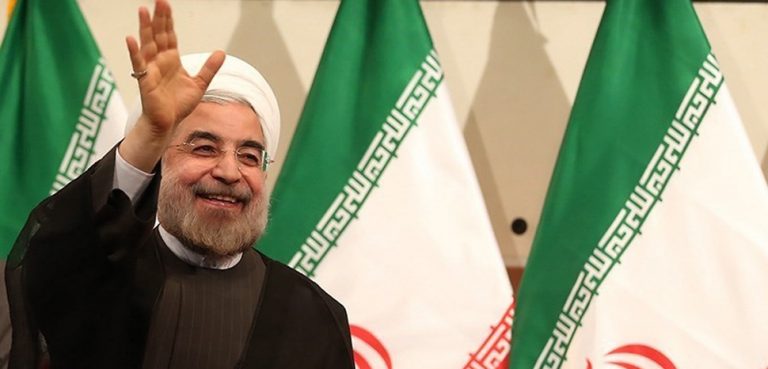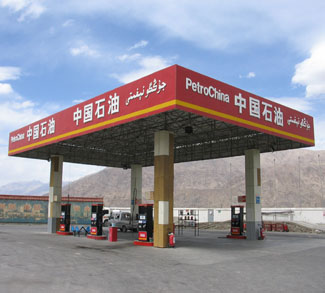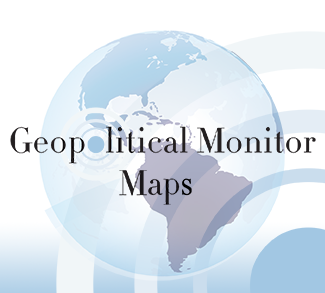Historical Background
Following the 9/11 terrorist attacks in the United States and America’s subsequent military campaigns in Afghanistan and Iraq, a power vacuum was opened stretching across the Greater Middle East. Iran has been quick to step in and fill it with the help of other Shiite groups in Iraq, Syria, and Lebanon. Since then, Iranian influence has become one of the core concerns and challenges for NATO. America’s war on ISIS is a potential boon to the theocratic government of Iran, since the most immediate and proximal threat to its existence has come under attack from US air power. Iran is considered a potential regional hegemony and for political reasons continues to intensify the execution of foreign policies contrary to American interests and those of the US’s biggest ally in the region, Israel. Accordingly, the Syrian-Iran alliance combined with the rise of regional non-state actors such as Hezbollah has created security concerns for NATO and its allies in the region. With the recent US and NATO drawdown from Afghanistan, Iran stands to extend its sphere of influence into Afghanistan through Afghan Shiite networks.
Hizb-e Wahdat Islami Mardum-e Afghanistan was established in 1989 with the support of the Islamic Republic of Iran, and it has played a significant political and military role in Afghan politics. This political party, Hizb-e Wahdad, is mainly composed of ethnic Hazaras (which compose an estimated 20% of the Afghan population) and under the leadership of Abdul Ali Mazari, the party’s main objective was to fight for the rights and political representation of the oppressed Hazara people. With the collapse of the Sunni-Wahhabi Taliban regime in Afghanistan in 2001, Iran was able to expand its foreign policies in Afghanistan even further. Today, Iran enjoys extensive economic, political, cultural, and religious influence over Afghanistan.
Iran’s ‘Dual Containment Policy’
The Bonn agreement in 2001 re-established the Afghan political system, ending the centuries-long domination of Pashtuns in Afghan politics. This new government, under the leadership of Hamid Karzai has allowed the non-Pashtun ethnic groups to be equally represented in the Afghan government. The Karzai administration was heavily dominated by Tajiks, Hazaras, and Uzbeks. Therefore, this major transformation in the Afghan political system has allowed Iran to potentially expand its sphere of influence into Afghan politics. In addition, the current National Unity Government under the leadership of President Ashraf Ghani will further consolidate Iranian influence in Afghanistan. In other words, the ongoing political transformation in Afghanistan since 2001 has allowed Iran to consolidate its soft and hard power capabilities in Afghan domestic affairs. For instance, the government of Iran has significantly increased investment into Afghanistan’s infrastructure, industry, and mining. Iran has invested nearly $500 million into Afghanistan since 2002, and Iran’s exports to Afghanistan have increased to $2 billion in 2001, and it could increase to $6 billion in the upcoming years. Moreover, Iran has been successful in establishing a security and economic buffer-zone in the western province of Herat. The Iranian government is also aiming to project its soft power capabilities by promoting Iranian culture and Shiite Islam in Afghanistan.
Iran’s Five Primary Objectives in Afghanistan
- Promote a stable central government in Kabul favoring Iranian interests, which means limiting the domination of Pashtuns over Afghan politics.
- Maintain close ties with ethnic Tajik and Hazara blocs.
- Accelerate the complete withdrawal of US and NATO troops from Afghanistan.
- Limit and prevent Pakistani and Saudi influence over Afghan politics.
- Cooperate closely with India in Afghanistan to destroy and eradicate Al-Qaida and the Taliban, and prevent the re-emergence of another Sunni-Salafist movement capable of dominating the entire country
Iran is thus pursuing a dual containment policy in Afghanistan, in which the Revolutionary Guards Corps is passively supporting Taliban insurgents in their war against NATO while also maintaining close ties with the “Farsiwan,” dari-speaking people (mostly ethnic Tajik and Hazara). In 2011, ISAF forces captured a Taliban commander in the province of Helmand claiming that Iran offered his insurgent groups $50,000 to destroy a dam project. There are other cases involving Iranian support to the Taliban. The Iranians provided sophisticated weaponry and shared intelligences with the Taliban to conduct attacks in Kabul, Kandahar, Herat and other provinces against NATO and Afghan National Army (ANA) forces. In December 2010, the Iranian government did not allow Iranian oil shipments into Afghanistan, causing a political crisis in Kabul. The shock pushed the price of oil and diesel up 35% in Kabul and 60% in Herat. On February 5 2011, British forces stopped three trucks, which were carrying shipments of four dozen 122-milimeter rockets, from entering Afghanistan from Iran.
Moreover, Afghanistan’s secret services, the National Directorate of Security (NDS), reported that Quds Forces inside Iran ran a terrorist training camp. NDS agents reported that Afghan militants were obtaining terrorist training in Ahvaz, the capital city of Iran’s Khuzestan province. It was also reported that Quds Forces were engaged in training suicide bombers in Iran to attack key NATO targets in Afghanistan.
To better understand Iran’s foreign policy agenda in Afghanistan, one should also consider Iran–US nuclear negotiations. Iran is apparently willing to curb its nuclear ambitions. However, the United States and NATO member states are pushing for a restrictive deal. Iran can thus turn around and offer to cooperate with the United States in Afghanistan, but only if Iran is allowed to peacefully pursue its nuclear program on its own terms. The drawdown of NATO and US troops will open new opportunities for Iran to shape Afghan politics in its favor. Iran could use the post-NATO stability of Afghanistan as leverage for a better nuclear deal.
The emergence of the Islamic State of Iraq and the Levant (ISIS) has had a significant influence over Iranian foreign policy. Iran’s main ally in the region, Syria, is significantly weakened by the presence of ISIS and other Jihadist groups. By all means, the Islamic Republic of Iran is willing to support the Assad regime and destroy ISIS, thus containing the spread of this dangerous non-state actor in the Greater Middle East. Similarly, the US drawdown from Afghanistan could also be an opportunity for ISIS to emerge across Afghanistan. Last month, General John Campbell, commander of the Resolute Support mission in Afghanistan announced that ISIS has presently begun its recruitment campaign in Pakistan and Afghanistan. The presence of ISIS in Afghanistan could be a major threat to Iran’s national security, because the Shiite country risks encirclement by Sunni-Salafist extremists on both sides (Iraq and Afghanistan). Therefore, the country’s pragmatic leader, President Hassan Rouhani, will cooperate closely with NATO and US forces in Afghanistan in eradicate the Taliban insurgents and prevent Afghanistan from falling in the hands of ISIS. Iran will keep close ties with the Dari speaking people of Afghanistan (ethnic Tajiks and Hazara), which represent 50% of the total population, to maintain its cultural, political, and economic influence over Afghanistan. For instance, Shiite Afghans outside of Afghanistan have already showed their loyalty to Iran by joining Iran’s Afghan legions in Syria to fight for the Assad regime. Iran’s Islamic Revolutionary Guard Corps (IRGC) has established the Shiite Afghan legions program in Syria by promising them a monthly salary of $500 and Iranian residency papers.
One might argue that Iran’s most secretive Quds force is working in Afghanistan to establish a network of Shiite fighters similar to Hizb-e Wahdad, to fight the presence of ISIS fighters across Afghanistan after the US drawdown. According to Afghanistan’s former intelligence chief, Amrullah Saleh, the government of Iran has assigned its three main institutions to maintain its sphere of influence in Afghanistan:
The clerical establishment in Qom. The Iranian clergies in Qom are assigned to promoting the expansion of Iran’s soft power and Shiite political influence in the rest of the Greater Middle East (Egypt to Pakistan) by directly supporting the Shiite minorities in those countries.
The Ministry of Intelligence. Iran’s foreign intelligence is assigned to establishing close ties with Afghan government officials in the ministries of foreign affairs, interior, defense, water, and energy to collect field intelligence across Afghanistan.
Iran’s Revolutionary Guards Corps (IRGC). According to Saleh, Iran’s secretive Quds force, based in the Ansar Headquarters in Mashhad and the 23rd Headquarters in Birjand, are assigned to conducting sabotage activates across Afghanistan. The reciprocal visa waiver program for diplomats has allowed many Revolutionary Guards and Iranian spies to enter Afghanistan for espionage activities. These Iranian spies most often are disguised as businessmen, aid workers, journalists, and civilians to enter Afghanistan. For instance, on May 7 2012, a news reporter, Abdol vahed Hakimi from Iran’s Fars News was arrested in Kabul for disclosing government secrets to Iran.
Future Outlook
On January 15 2015, TOLO News announced negotiations over a comprehensive security pact between Kabul and Tehran. After signing the Bilateral Security Agreement (BSA) with the United-States, the new Afghan president is looking to sign a security agreement with Iran. This pact will boost cooperation between Iran and Afghanistan on the fight against terrorism and cross-border drug trafficking, while promoting mutual economic and cultural exchange. The news comes after President Ghani’s last visit to Islamabad, Pakistan, where he tried to persuade the Pakistani government to cooperate in the fight against insurgents, and also requested that the Pakistani military be more transparent in their actions against cross-border insurgents. Despite decades of efforts by Iran to train, finance, and provide military aid to the Hizb-e Wahdad Party, the new generations of Hazaras in Kabul are uncertain of Iran’s intentions. This is also as a result of the decades-long experience during the Afghan Civil War in the 1990s, in which Iran played a double game strategy by supporting the forces of Hazara Hizb-e Wahdad against the Tajik coalition forces of Jamiat-e Islami under the leadership of Ahmad Shah Massoud. While they were fighting each other in the streets of Kabul in the 1990s, Iran was providing military assistance to both parties. Therefore, many young well-educated Hazaras do not trust Iran. Instead they accuse Iran for being responsible for promoting division among different ethnic groups by promoting ethnic and sectarian violence between Tajiks and Hazaras in the 90s. During the Loya Jirga of November 2011, the Iranian government paid millions of dollars to elders who were attending to vote against the Bilateral Security Agreement (BSA) between the US and the Afghan government. However, the elder members of the Loya Jirga assembly voted in favor of the BSA, and the strategic agreement between the United States and Afghanistan was approved and ratified by the newly-elected president, Dr. Asraf Ghani. This episode suggests that the Afghan people are politically apt and able to make informed decisions on the future of their country free from Iranian or Pakistani influence.




